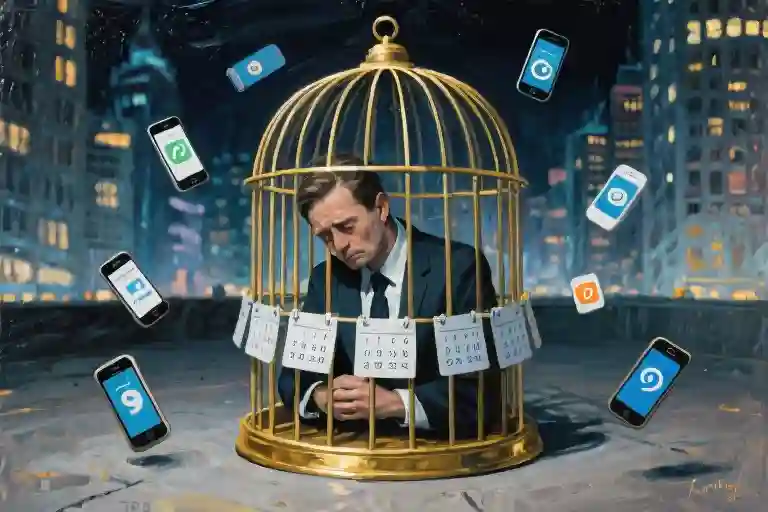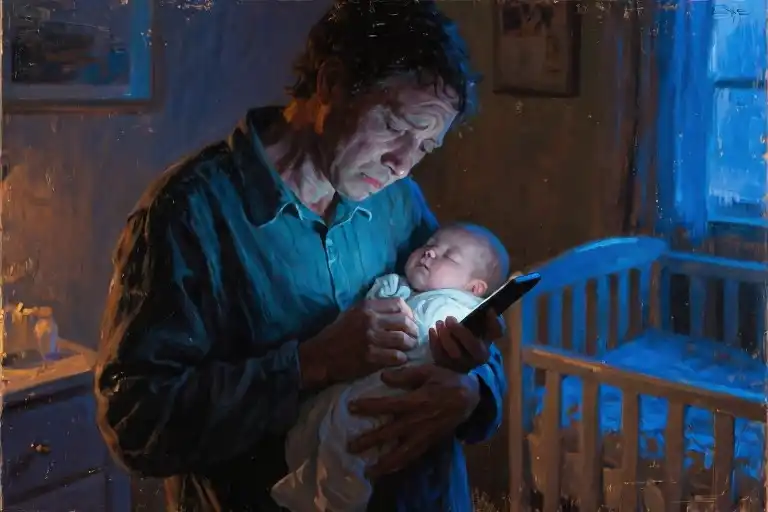The girl’s words hung in the air between us, heavy with unspoken pain. “My parents gave me away. I have no one else who wants me.” Her fingers picked at the edge of the hospital gown as she avoided my eyes. In ten years as a pediatric psychiatry chaplain, I’ve learned to recognize this particular flavor of hurt – what we call an “ultimate meaning struggle.” It’s that moment when a young person looks at their life and sees only emptiness where there should be purpose.
Her case was extreme, but the underlying question isn’t uncommon. “Why am I even alive?” isn’t just the cry of troubled teens in psychiatric units. I’ve heard variations of it from honor students, star athletes, and quiet kids in the back of classrooms. Sometimes whispered, sometimes shouted, always carrying that same bewildered ache.
What makes these moments particularly heartbreaking is how often they go unnoticed. Teens might drop hints – “What’s the point?” or “Nobody would care if I disappeared” – phrases we too easily dismiss as dramatic flair or teenage moodiness. But when a 15-year-old tells you they feel like “a ghost already,” they’re not being poetic. They’re describing a very real spiritual crisis.
This isn’t about diagnosing depression (though the two can overlap). It’s about recognizing when a young person loses their sense of belonging in the world. That moment when the stories we tell them – “you matter,” “you have potential” – stop lining up with their lived experience. As the foster teen in my unit put it: “They keep saying I have a future, but future of what?”
Here’s what I wish every parent, teacher, and counselor understood: these struggles rarely announce themselves. You won’t find “existential despair” listed in school behavior reports. It shows up in subtler ways – the gifted student who suddenly stops trying, the social butterfly who withdraws, the kid who laughs too loud at jokes about dying. They’re not always asking for help, but they’re always showing us where it hurts.
The good news? Meaning can be rebuilt. Not with platitudes or pep talks, but by helping them reconstruct their place in the world’s story. Over the next sections, we’ll explore how to spot these invisible crises and – more importantly – how to respond in ways that actually help.
Why Teens Wrestle with the Question of Meaning
The girl’s words hung in the air between us – “My parents gave me away. I have no one else who wants me.” This wasn’t just teenage angst or temporary sadness. What she voiced represents a profound human experience we chaplains call “ultimate meaning struggle” – when the foundations of why we exist seem to crumble beneath us.
What many adults dismiss as melodrama actually follows clear patterns I’ve observed through years of working in pediatric psychiatry. These meaning struggles share three surprising characteristics that most caregivers miss:
First, they’re far more common than we assume. In my unit, about 60% of teens reference feelings of purposelessness during admission interviews, whether they’re battling depression, anxiety, or behavioral issues. Research from the CDC suggests nearly 40% of high school students persistently feel disconnected from any sense of meaning. Yet because our culture often trivializes adolescent existential questions, these struggles remain underreported and misunderstood.
Second, they’re masters of disguise. Unlike dramatic suicidal ideation, meaning struggles often manifest through subtle behavioral shifts – the star athlete who quietly stops caring about practice, the straight-A student who begins turning in half-finished work. I once worked with a teen who meticulously maintained a perfect Instagram feed while secretly writing “NOTHING MATTERS” in Sharpie on her bedroom walls. When adults do notice, they frequently mislabel it as laziness or rebellion.
Third, they cross all socioeconomic lines. The foster care teen who feels unwanted and the privileged prep school kid surrounded by luxury but starved for authentic connection often arrive at the same hollow question: “What’s the point?” Material security doesn’t immunize against existential emptiness – if anything, having basic needs met sometimes accelerates the search for deeper purpose.
This differs fundamentally from clinical depression, though they often coexist. Where depression drains energy and hope, meaning struggle specifically targets one’s sense of place in the universe. I’ve seen teens who could still enjoy video games or laugh with friends while simultaneously believing their existence held no real value. That distinction matters because it changes how we help – antidepressants alone won’t answer “Why was I born?” but neither will philosophical discussions cure biochemical imbalances.
The psychiatrist Viktor Frankl, who survived Auschwitz, argued that our primary human drive isn’t pleasure (as Freud thought) or power (as Adler believed) but meaning. When that drive gets blocked, especially during adolescence’s identity formation, the psychological consequences can ripple outward for decades. Next time a teen in your life makes an offhand comment about nothing mattering, listen closely – you might be hearing the first whispers of a struggle that could shape their entire adulthood.
Recognizing the Silent Signs
The girl in the psychiatric unit wasn’t crying when she asked why she was alive. She said it quietly, staring at the ceiling, as if stating a simple fact about the weather. That’s the first thing to understand about ultimate meaning struggles in teens—they often whisper when we expect screams.
The Language of Lostness
Listen for phrases that carry existential weight disguised as casual remarks:
- “What’s the point of school if I’ll just die someday?”
- “Nobody would notice if I disappeared tomorrow.”
- “I’m just a burden anyway.”
These aren’t typical teenage dramatics. When a 15-year-old says “My parents gave me away” with detached precision rather than anger, they’re articulating a spiritual fracture. The key distinction? Normal venting has specific targets (“I hate my math teacher”), while meaning struggles speak in universals (“Everything feels empty”).
Behavioral Red Flags
Watch for these subtle but critical patterns:
- The Passion Drop
When a teen abandons activities they once loved—not temporarily from stress, but with finality (“I quit piano. Music is just noise anyway”). Unlike depression’s total withdrawal, they might replace passions with hollow busyness (endless scrolling, excessive chores). - The Chameleon Effect
Over-adapting to others’ expectations while losing their own voice. The honor student who says “I don’t know what I want—just tell me what to do” may not be lazy but existentially adrift. - Precision Stoicism
Adults often mistake quiet compliance for resilience. The foster youth who insists “I’m fine” while folding her clothes perfectly in the group home isn’t coping—she’s given up on being seen.
Emotional Undercurrents
The emotional palette of spiritual struggle has distinct hues:
- Metallic Emptiness: Not sadness, but a hollow sensation teens describe as “like my insides are aluminum foil”
- Time Distortion: “Days feel fake, like I’m watching my life on TV”
- Social Static: Surface-level engagement (laughing at jokes, attending events) with disconnected eyes
A teacher once told me about a student who aced every test but wrote in her journal: “I’m a ghost filling in correct bubbles.” That’s the paradox—these teens often function impeccably while feeling utterly unreal.
Why It Gets Missed
Parents and professionals frequently overlook these signs because:
- High-Functioning Camouflage: Many struggling teens maintain grades and manners
- Misdiagnosis: Symptoms get labeled as depression or ADHD without addressing the root meaning crisis
- Adult Projection: We assume teens worrying about existence are just “being philosophical”
The boy who tells his soccer coach “Running fast just means reaching the end quicker” isn’t trying to be deep—he’s signaling distress in the only language he has.
Your Detection Toolkit
Try these observational strategies:
- The 3-Week Rule: Note if behavioral changes persist beyond typical mood swings
- Metaphor Mapping: Ask “If your life were a book/movie right now, what genre would it be?” (Dystopian answers warrant attention)
- Silence Tracking: Sometimes the loudest clue is what they stop saying (e.g., no longer complaining about friends = possible detachment)
Remember, these teens won’t hand you a manual. One girl I worked with only revealed her despair by drawing the same sketch repeatedly—a small figure at the bottom of a blank page, labeled “Me, waiting for nothing.” The signs are always there. You just need to know how to read them.”
Supporting Teens Through Meaning Struggles: Role-Specific Approaches
The girl’s words still echo in my chaplaincy office – My parents gave me away. I have no one else who wants me. That moment crystallized why we need tailored approaches when addressing ultimate meaning struggles in adolescents. What works for a school counselor won’t necessarily help a foster parent, and a biology teacher’s tools differ from a social worker’s.
For Parents: The Three-Phase Dialogue Method
Parenting a teen questioning life’s purpose requires replacing quick reassurances with structured listening. The three-phase approach isn’t about having answers, but creating space for exploration.
Phase 1: Deep Listening
When your son mutters Nothing matters anyway, resist the urge to counter with Of course it does! Instead, try That sounds really heavy. Tell me more about when this feeling shows up. Mirror their language without inserting your interpretation. The goal isn’t problem-solving yet – it’s validating that their struggle is worth your undivided attention.
Phase 2: Exploratory Questions
After they’ve emptied their thoughts, gently guide toward self-discovery:
- If you could design a perfect day, what would make it meaningful?
- When was the last time you felt slightly less alone? What were you doing?
These aren’t therapy questions; they’re conversation starters that help teens articulate latent values.
Phase 3: Meaning Reconstruction
This phase transforms insights into tangible actions. If your daughter mentions feeling alive while drawing, you might say You mentioned creating art makes life feel brighter. Would you want to turn that into our Saturday morning ritual? The key is co-creating meaning through small, consistent practices rather than grand pronouncements.
For Educators: Curriculum as Meaning-Making
Classrooms become unexpected sanctuaries for existential questioning when teachers creatively tie lessons to purpose exploration. A physics teacher might frame entropy as:
Everything in the universe moves toward disorder – except human beings. We get to create meaning against that tide. What kind of order do you want to bring to your corner of chaos?
History lessons can examine how individuals maintained purpose during dark periods. Math problems might calculate the statistical improbability of each student’s existence. These aren’t diversions from curriculum – they’re bridges between abstract knowledge and a teenager’s search for relevance.
For Social Workers: The Resource Mapping Strategy
Caseworkers supporting system-involved youth need concrete tools. Create a Meaning Map with three sections:
- Connections
List every adult (coach, librarian, former teacher) who’s ever shown genuine interest in the teen. These become potential anchors. - Purpose Experiments
Identify low-commitment opportunities – animal shelter volunteering, community garden plots, youth radio programs – where teens can test different versions of themselves. - Legacy Markers
Help them leave tangible evidence of their worth: What’s one skill you could teach younger kids at the rec center?
The map evolves as they discover what makes their heart resonate. One foster teen found his turning point through a photography program – When I frame the shot, I’m deciding what matters.
Common Threads Across Roles
All effective approaches share three elements:
- Presence over solutions – Teens need companions in their confusion, not fixers of their existential dilemmas
- Small increments – Meaning builds through repeated micro-moments of feeling valued
- Embodied experiences – Abstract discussions about purpose land differently after planting a tree or mentoring a child
The girl who thought nobody wanted her? She’s now leading art workshops for other foster youth. Not because anyone gave her a pep talk about life’s meaning, but because we created spaces where she could discover her own answer – one brushstroke at a time.
Building a Long-Term Support Toolkit
The moment a teenager whispers “I don’t see the point anymore” shouldn’t mark the end of a conversation—it should begin one. Having spent years in pediatric psychiatric units, I’ve learned that addressing ultimate meaning struggles requires more than crisis management. It demands sustainable tools that fit into the irregular rhythms of adolescent lives.
Crisis Intervention That Doesn’t Feel Clinical
Emergency resources work best when they feel human. While we always keep suicide prevention hotlines (like 988 in the U.S.) visible, I encourage supporters to also bookmark:
- Crisis Text Line: Teens often text when they won’t speak (text HOME to 741741)
- TrevorSpace: 24/7 moderated forums for LGBTQ+ youth
- Local warmlines: Non-emergency peer support numbers (less intimidating for early struggles)
What makes these different? They allow for the ambiguous, in-between moments—when a teen isn’t actively suicidal but feels that creeping emptiness. I’ve watched kids scroll through TrevorSpace for hours, not posting but absorbing the simple truth: Others feel this too.
Meaning-Building Tools for Ordinary Days
That PDF workbook you downloaded? It’s probably collecting digital dust. Teens reject anything that smells like homework. Instead, try these living tools:
The Playlist Project
Have them create three song lists:
- Songs that describe my pain
- Songs that give me energy
- Songs that imagine future me
Music bypasses resistance. I’ve seen hardened teens tear up realizing they’d unconsciously included hopeful tracks in their “pain” playlist—evidence their psyche still believed in something.
Grocery Store Philosophy
Next time you’re shopping together:
“If your life had a ‘nutrition label’ like these packages, what would be the main ingredients? What’s missing that you’d want to add?”
Concrete metaphors work better than abstract “purpose” talks. One foster youth realized her “label” lacked “belonging”—which led us to research community choirs instead of another therapy worksheet.
Finding the Right Professional Help
Not all therapists are equipped for existential struggles. When vetting providers, ask:
- “How do you approach conversations about meaninglessness?” (Listen for non-religious frameworks)
- “Can you describe a time when a client’s lack of purpose surprised you?” (Beware those who claim to have all answers)
- “What non-clinical resources do you recommend?” (Good signs: poetry, nature groups, volunteer matching)
Teens sniff out condescension instantly. The best specialist I know keeps a “stupid questions” notebook where clients anonymously submit raw thoughts (“If we’re all gonna die, why brush teeth?”). Discussing these normalizes the unanswerable.
The One Thing to Do Tonight
Before bed, text your teen:
“What’s one thing today that made you feel real? (Mine was [your example])”
Not “meaningful”—too heavy. “Real” invites tiny, tangible moments: the crunch of autumn leaves, a perfect bite of pizza. These become footholds when the big “Why am I here?” questions feel overwhelming.
Six months after our first talk, that abandoned girl from the psych unit showed me her playlist. Track 3 on her “future me” list? “Beautiful” by Eminem—not because she felt beautiful yet, but because she’d started believing she might someday. That’s how ultimate meaning grows: not in grand revelations, but in borrowed hope set to a beat you can nod along to.
Closing Thoughts: When Light Breaks Through
The last time I saw her, she was wearing a yellow sweater – the color of sunflowers pushing through cracked pavement. Six months after our first conversation in the psychiatric unit, she sat cross-legged on the floor of a foster family’s living room, teaching their toddler how to fold paper cranes. ‘They’re supposed to bring hope,’ she explained to the wide-eyed child, her fingers carefully creasing the edges. When she noticed me in the doorway, she didn’t mention our previous talks about life’s pointlessness. Instead, she held up a lopsided crane: ‘Look, I’m terrible at this, but he doesn’t care.’
That moment contained everything I want you to remember about supporting teens through spiritual struggles. Recovery isn’t about grand revelations or perfect solutions. It’s found in the ordinary moments where fractured edges begin to mend – a teenager persisting at something she’s bad at because someone values her imperfect effort. The paper crane wasn’t therapy; it was evidence that she’d begun answering her own question about why she existed.
Tonight at 8pm, try this: Ask one teenager in your life, ‘What’s something you did today that felt meaningful – even in a small way?’ Don’t correct their answer. Don’t turn it into a lesson. Just listen. Their response might surprise you – and them. I’ve seen grocery bagging, failed skateboard tricks, and remembering to water a plant all become unexpected anchors of purpose.
For those wanting to explore further, I keep returning to Dr. Emily Esfahani Smith’s The Power of Meaning – particularly her chapter on how belonging transforms our sense of purpose. It sits on my office shelf between a book on adolescent brain development and a collection of origami instructions, which feels about right. Meaning rarely comes from single sources; we find it in the spaces where different kinds of wisdom overlap.
What stays with me isn’t the dramatic breakthroughs, but the quiet shifts – like when that same teenager later told me, ‘I still don’t know why I’m here, but that kid really likes my terrible cranes.’ That’s enough to begin with. For her. For you. For any of us.




